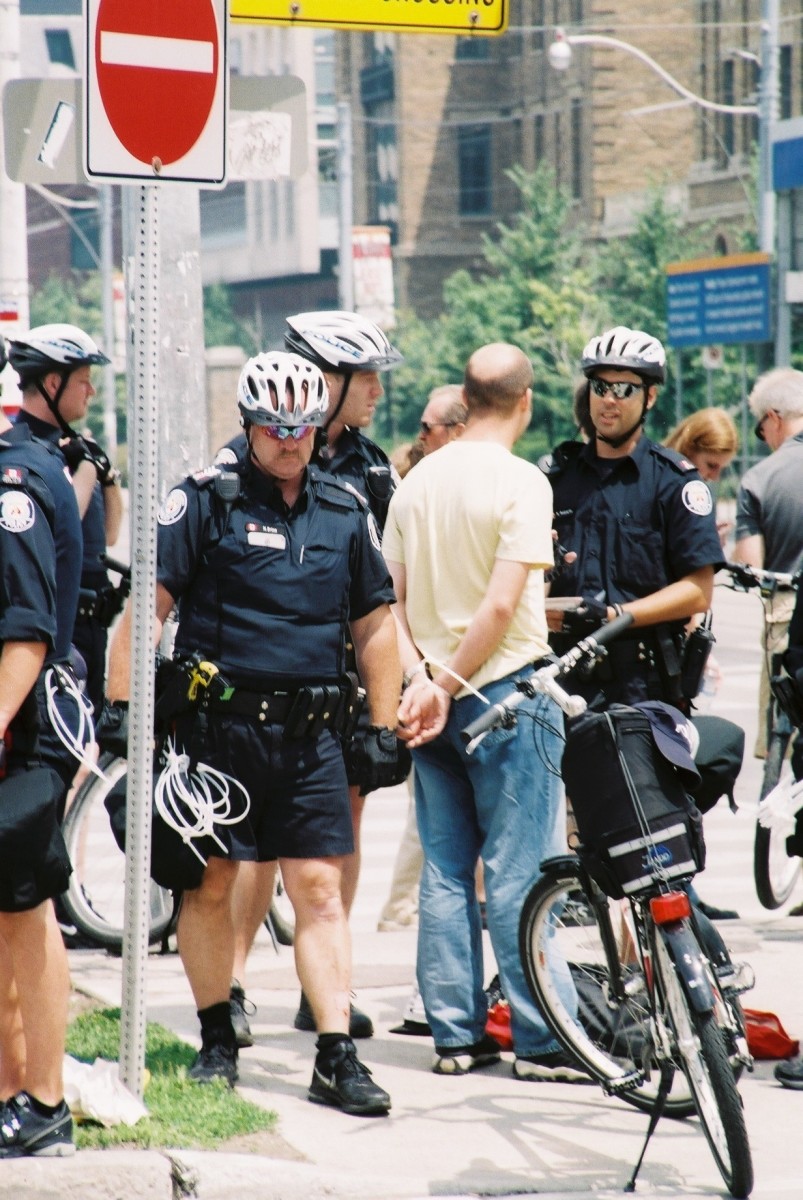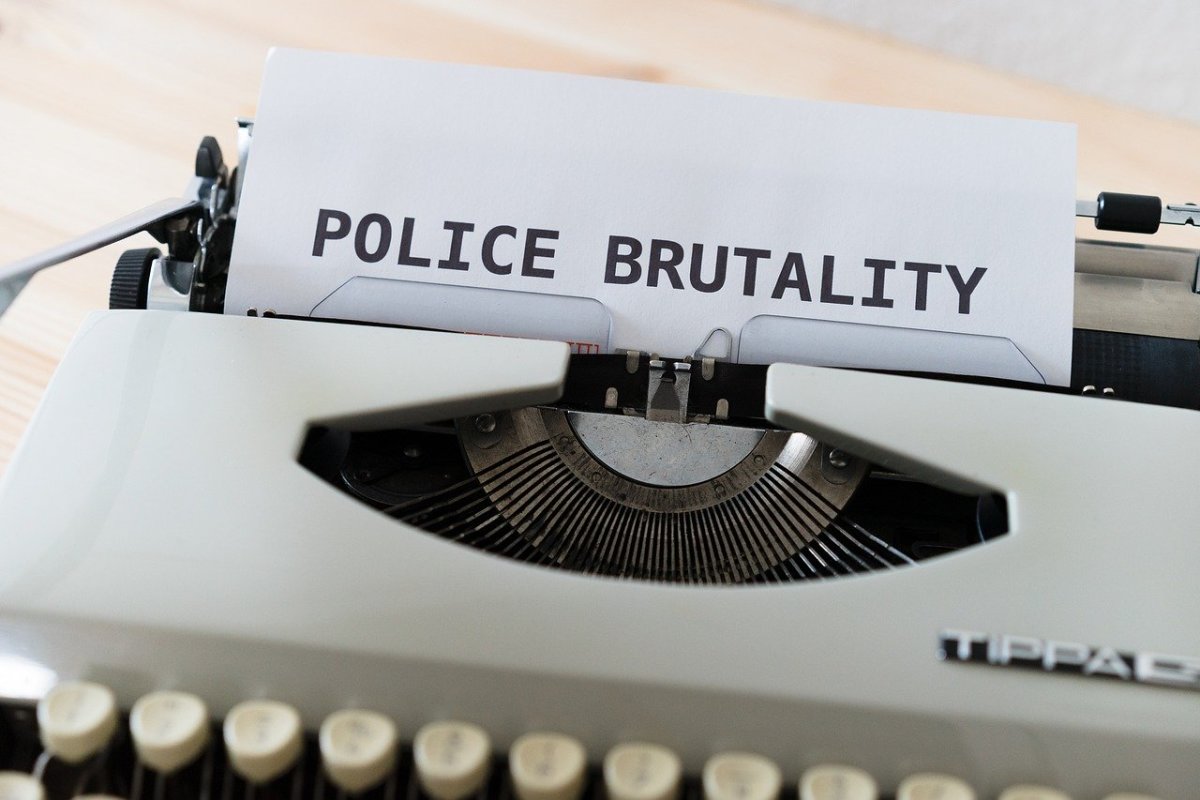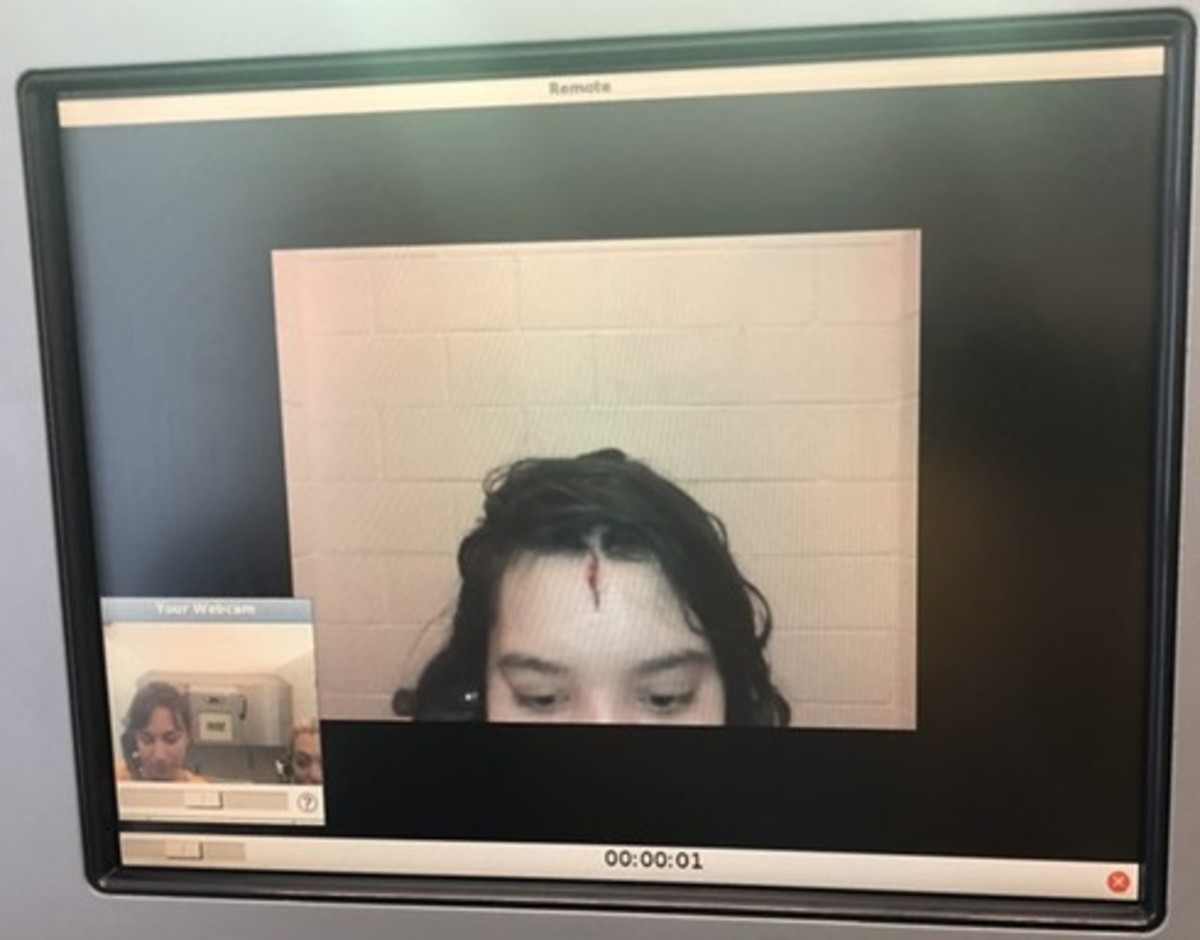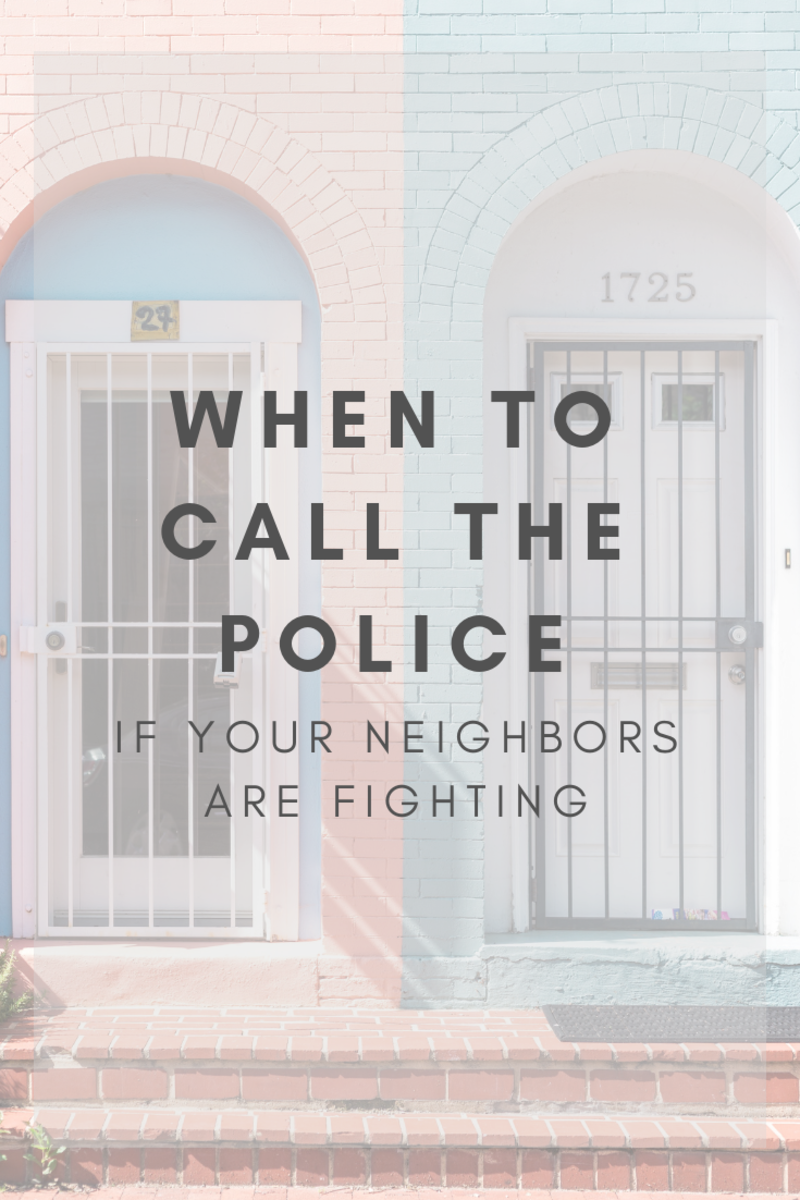The Police Wife Life, School Resource Officers, A Child's Advocate, by Melissa Littles
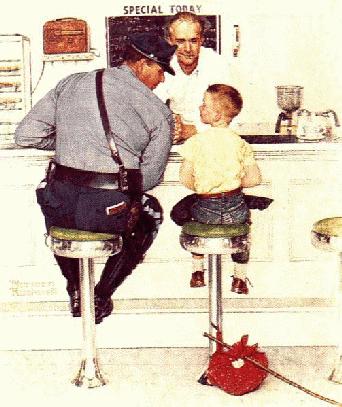
Back in the day when there was more innocence in youth, a child went to school in fear of the Principal's office. The transgressions of a school aged child included chewing gum in class and passing notes. The bully was a simple misfit back in the day and most fights were all talk and no action. School aged children walked the halls free of metal detectors and if there ever was a fear for their own safety, they knew their mother would handle it by having a stern talking to with the other child's parent. That was then. This is now.
What is a School Resource Officer?
While there is no standardized definition for what a School Resource Officer is, the National Association of School Resource Officers (NASRO) defines "School Resource Officer" (herein after, "SRO") as:
..."Officers [who] promote a better understanding of our laws, why they were enacted and their benefits. They provide a visible and positive image for law enforcement. They serve as a confidential source of counseling to students concerning problems they face. They bring expertise into schools that will help young people make more positive choices in their lives. They also work to protect the school environment and to maintain an atmosphere where teachers feel safe to teach and students feel safe enough to learn"... (NASRO web site).
Although this provides a good general definition of "what" a "SRO" is, it by no means tells the story of the SRO in layman's terms that parents, especially, can relate to.
A School Resource Officer is a commissioned law enforcement officer who has been assigned to a school or group of schools. SRO's will complete specific training to fill the position of SRO, and in addition, many SRO's have additional training including Crisis Intervention, Suicide Prevention as well as training related to gang affiliated involvement as gained through local and national Gang Task Force training. Many SRO's will also complete DARE (Drug Abuse Resistance Education) training.
The role of the School Resource Officer includes being a law enforcement officer, acting in the capacity as a police officer, a law-related counselor of students and parents of students, as well as a law-related teacher and advisor. It is a common misconception that SRO's are not fully commissioned officers within many communities. The lack of information relayed to parents by school administrators can in some cases share some of this blame, but most commonly, it is a completely innocent ignorance by most as to what the role, duties and responsibilities of the SRO entail. Not to say that is the fault of the parents, it is simply not a position in the schools which seems to draw much attention until something negative happens. In a study performed by questioning parents on enrollment day, less than 12% of parents and students had any understanding of the role of the School Resource Officer, or what responsibilities and duties were involved in the position. Most parents answered no when asked if the School Resource Officer had the right to arrest and file charges against a student.
To fully understand the role of the SRO is to walk a mile in his/her shoes, so to speak. To view the role from the viewpoint of a SRO is helpful in gaining insight into what we should all know about who is responsible for protecting our children, and in what capacity, and for what purpose.
A School Resource Officer's duties go far beyond just keeping the peace in the schools. A SRO is in a way, the keeper of a self contained city. The school halls are the streets, the lockers and locker rooms are potential storefronts subject to vandalism and robbery. The classrooms harbor the potential for fraudulent activity, the parking lots are potential ground for drug deals, the playgrounds and athletic centers are prone to fights, violent outbursts and gang related activity. The teachers are potential targets of violence and the students are potential perpetrators of violence as well as victims of violence. the SRO's office is an interrogation room for those with confessions to make, and a safe haven for those seeking protection and assistance.
A School Resource Officer must be prepared to act within the commissioned capacity held as a law enforcement officer, while all the while dealing with the dynamic of being responsible for the welfare of up to 2,000 children. A good School Resource Officer will look at the students as his/her "kids", and will strive to build a repore with them, mentor them, lead them down the right path, much like a teacher would. A good SRO will try and gain the confidence of the students so they will feel safe when divulging information about bullies, thieves, drug dealers and gang members. The SRO will work to find the balance between police officer, counselor, mentor and teacher.
A School Resource Officer is faced with situations many may not expect to deal with in our schools. If your perception of a School Resource Officer is that of a "security" presence roaming the halls....reconsider. A SRO will have young girls come to them with tales of abuse from a stepfather. They will have students confide in them that they have been raped. They will have young men confess to selling drugs for their parents, or older siblings. They will constantly be checking for weapons, drugs, alcohol and threats of violence. They will be expected to investigate every single lead which indicates a potential for danger exists, regardless of the source. They will have children arrive at school beaten and bruised, no longer able to keep the secret that was to remain at home. They will have young ladies fearing the wrath of their parents in revealing a pregnancy. They will have young fathers to be in fear of their lives. They will take abused children to the hospital and go to the homes of the siblings to remove them to DHS custody, then handle the responsibility of dealing with the parents and any charges that follow. They will have students come to them who are suicidal over issues ranging from their home life to relentless bullying and cyber stalking, and they will deal with parents each day who do not care, do not accept responsibility or those parents who turn their anger upon the SRO and the school for picking on their child. They will have parents arrive drunk on the school ground, they will have students who have eating disorders, are cutters, or have already developed a drug or alcohol addiction. They will deal with confiscating cell phones which reveal illegal activity in the text messages, or sexual activity which constitutes porn under today's guidelines, which then leads them to an entirely new investigation. In a single day a SRO will be expected to handle a drug bust, the investigation, the suspects, the fallout for those who snitched, the threats of retaliation, the fight that ensues, the parents who must be notified then dealt with, and the paperwork necessary for the school disciplinary board as well as the police department. This is of course, in addition to all the other daily duties and expectations of the SRO.
Although in comparison to national crime and violence statistics, incidents of school related deaths or violence make up less than 3% of all violent acts, when allocating those same statistics as it relates to our schools, the numbers become much more alarming.The National Center for Disease Control published the following: "Understanding School Violence Fact Sheet in 2010":
Environment:
Approximately 38% of public schools reported at least one incident of violence to police during 2005-2006. In 2007, 23% of students reported gangs at their schools. From 2003-2004, 10% of teachers in city schools reported that they were threatened with injury by students, compared with 6% of teachers in suburban schools, and 5% in rural schools.
Risk Behaviors:
In 2007, a nationwide survey of students in grades 9-12 reported the following risk behaviors: 5.9% of students carried a weapon (e.g., a gun, knife, or club) on school property during the 30 days before the survey. 7.8% of students were threatened or injured with a weapon on school property during the 12 months before the survey. 12.4% of students were in a physical fight on school property during the 12 months before the survey. 22.3% of students were offered, sold, or given an illegal drug by someone on school property during the 12 months before the survey.
Additionally, according to the FBI school crime statistic fact sheet, since 1999, there have been 284 school related deaths by shooting, suicide, fighting or stabbings. Those numbers may seem tolerable when looking at it over a decade's worth of time and considering there are literally millions of children in our school's. However, the day your child becomes a victim, you will be the first to wonder why more is not being done to control violence in our schools.
And to those who think School Resource Officers are not at risk in the schools, 13 School Resource Officers have lost their lives while working in their capacity as SRO's.
A decline in the overall percentage of violence in America's schools, combined with a struggling economy, has led to many budget cuts leading to less School Resource Officers in our schools. It is imperative to keep our students safe and to do that, each state must ensure that the SRO's position in our schools is a top priority. There was nothing more than the standard crime statistics on file for Columbine High School prior to the shootings. Rest assured, regardless of the number of years with no violent related incidents following the massacre, or budget cuts, or a struggling economy, there will always be funding for School Resource Officers at Columbine. It should never take the loss of life to recognize and acknowledge the need for School Resource Officers in our schools.
All law enforcement officers are drawn to their line of work. They have a compassion for their community and the safety and welfare of others. They "protect and serve", not out of a sense of obligation, but out of a sense of responsibility and conviction. It takes a special kind of officer to commit to dedicating themselves to protecting and serving the safety and welfare of our children. They, along with teachers and counselors, are preparing these students to be the future adults of our communities....communities which the SRO already has a duty to protect and serve. I myself, am grateful for my School Resource Officer, his commitment to thousands of children who are not our own, his compassion for their welfare and his genuine desire to see them excel as responsible, productive members of society.
Be grateful for our law enforcement officers.
School Resource Officer Deaths
- School Associated Violent Deaths and School Shootings
School-associated violent deaths, school shootings, and school crisis: School safety and school security incidents.

